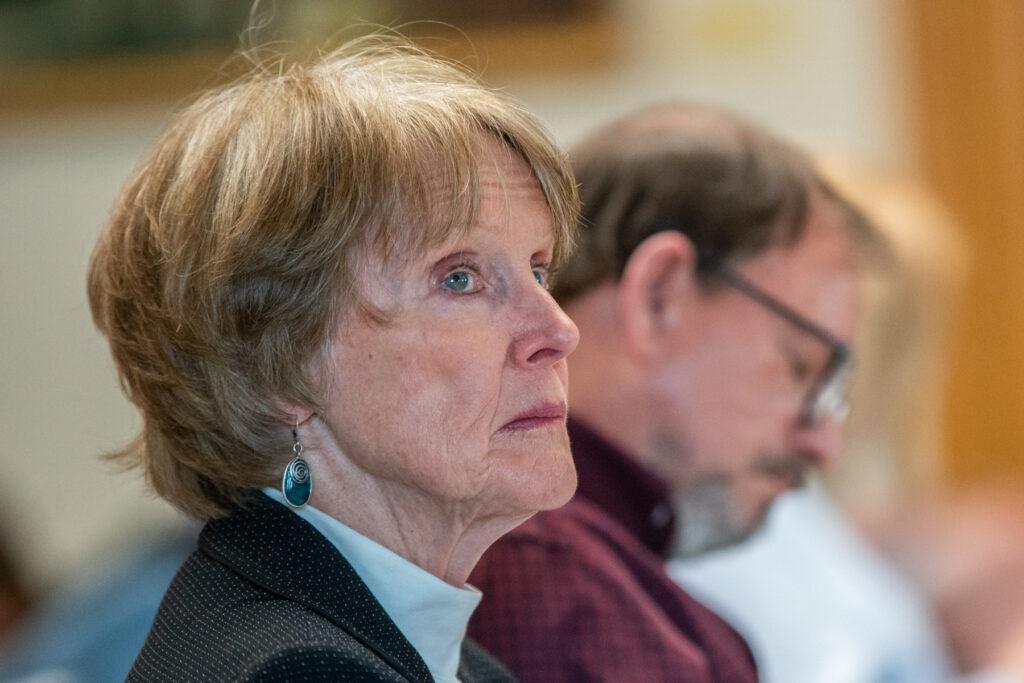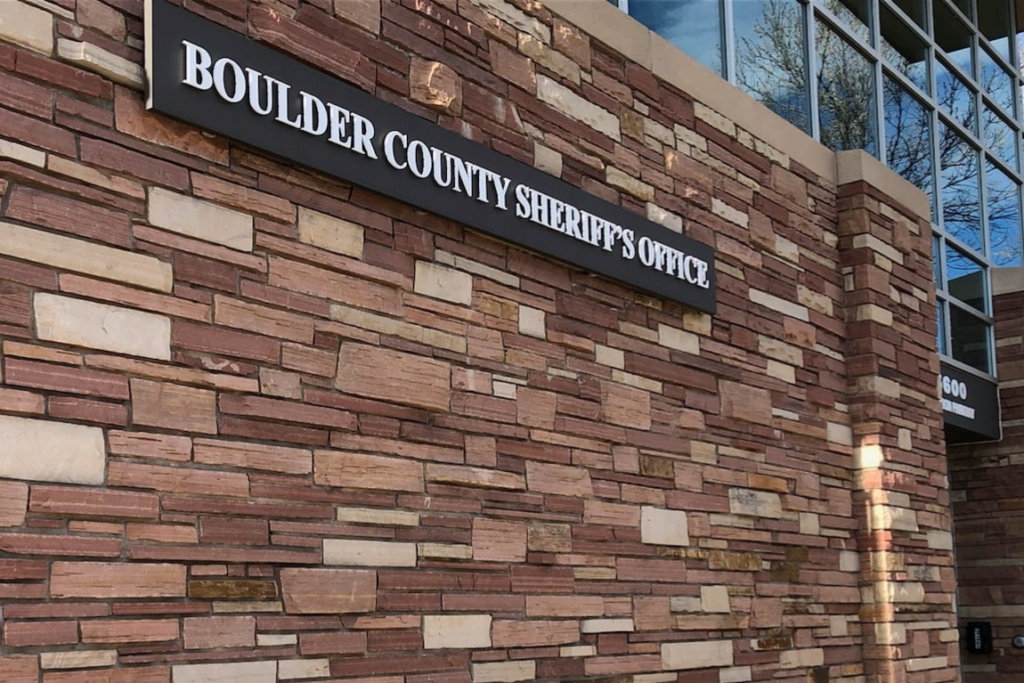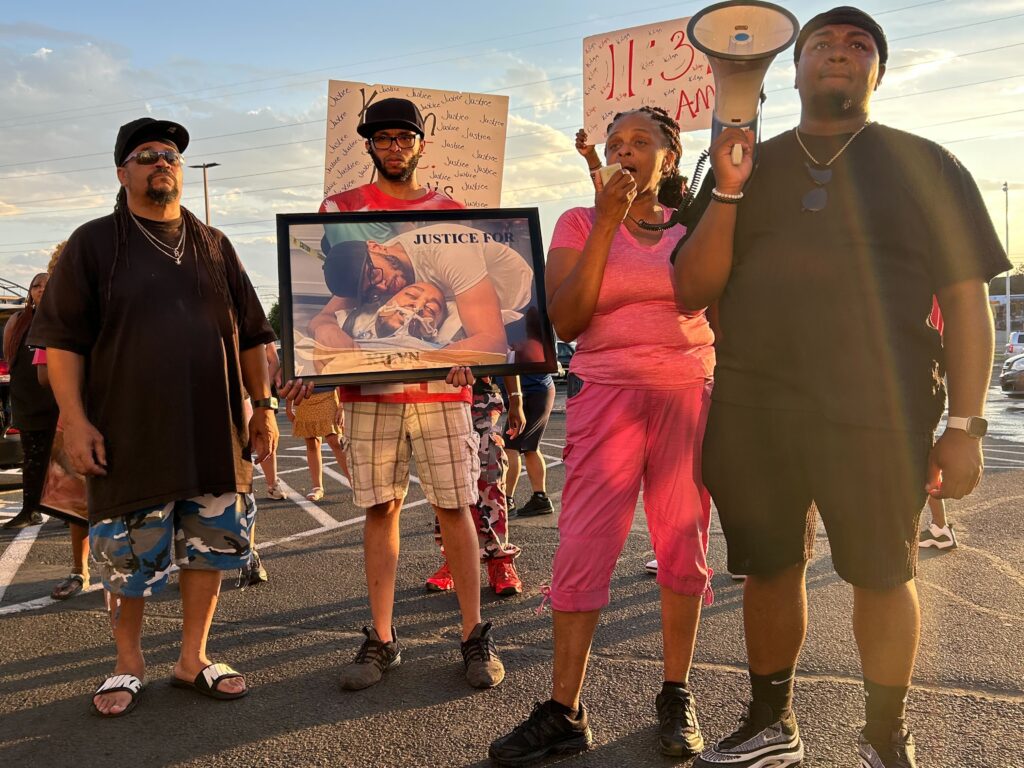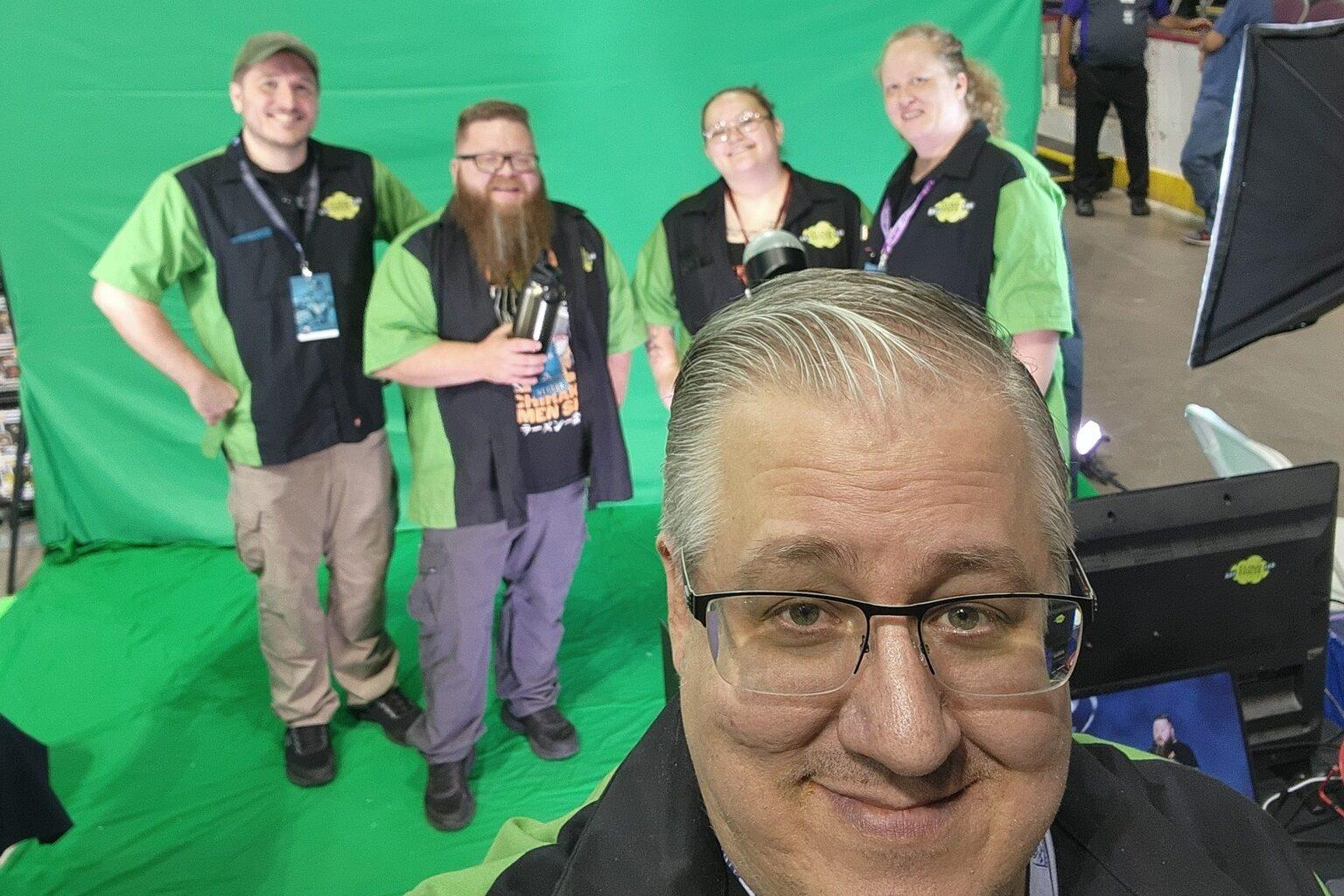
The crowds demanding justice for Kilyn Lewis have repeatedly called for the Aurora police officer who pulled the trigger killing the unarmed Black man to be immediately held criminally accountable for the 37-year-old’s death.
“It’s drawn out so maybe interests and people will look the other way,” said Alice Hayes, a cousin of Lewis’ wife, and an Aurora resident who showed up at a City Council meeting earlier this week to express frustration with how the investigation is being handled. “We as taxpayers and as voters, we need to change that culture of the wheels turning slow.”
But elected prosecutors who have worked on dozens of police shooting cases said there are many reasons why investigations into law enforcement shootings take so long, even when multiple body-worn cameras provide indisputable footage that seems to depict an entire event.
For starters, the shootings often have several witnesses, each of whom must be interviewed. Some of those witnesses – particularly the officer who discharged his weapon – will want to schedule that interview for later in the presence of a lawyer.
For public safety reasons, agencies also must move more quickly on other violent incidents, which can sometimes shuffle investigations of law enforcement shootings down the list.
“I would say to folks, this is something that's been going on for a long time in terms of trust in prosecutors and police and all of us trying to ensure that people who wear a badge are held accountable,” said Arapahoe County District Attorney John Kellner, whose critical incident response team is working on the Lewis investigation.
Kellner will ultimately decide whether to file charges against Aurora Police SWAT officer Michael Dieck, who fired the bullet that killed Lewis.
“My office has a long history of prosecuting individuals who wore a badge, who committed some kind of crime,” Kellner said. “You just don't want to rush to a decision. We're going to complete our process and I'm going to complete my review, and then I'm going to make a decision whether that is to file charges, not file charges, or present the case to a grand jury. I haven't made a decision yet.”
Prosecutors push to quicken the pace
Boulder District Attorney Michael Dougherty said he has prioritized moving police shooting cases along more quickly because the decision on whether to criminally charge an officer matters to so many people: the community, the victim’s family and the family of the law enforcement officer.
“We treat these as a top priority,” Dougherty said. “I recognize when people are frustrated that these are taking what they perceive to be too long, but I want to make sure that two, three or 15 years from now they look back and they know the right result was reached in terms of the thoroughness of the review, whether it took three weeks or eight weeks.”
State laws dictate a loose formula for law enforcement agencies and prosecutors to follow when an officer shoots someone on duty or when someone dies in the custody of officers.
The moment it happens, the scene becomes a typical crime scene. For a shooting, the officer who discharges his weapon is asked to step away and that officer’s home agency is no longer involved in the investigation into the officer’s conduct. The exception to this is the Denver Police Department, which investigates its own officer shootings, along with the Colorado Bureau of Investigation and the Colorado State Patrol, said District Attorney Beth McCann.
For every other agency, though, a team of officers or sheriff’s deputies from neighboring agencies get called out to the scene to start the investigation. The local DA’s office is also typically called and a prosecutor shows up.
Law enforcement officers said police shooting investigations are treated like any other homicide.
However, there is one significant difference that can further complicate inquiries: Colorado law allows police officers to use deadly force “if the peace officer has an objectively reasonable belief that a lesser degree of force is inadequate and the peace officer has objectively reasonable grounds to believe, and does believe, that he or another person is in imminent danger of being killed or of receiving serious bodily injury,” according to state law.
Pressure testing words like “reasonable grounds to believe” can take time.
“These investigations, while it seems like it takes awhile, there are folks outside that department who have no personal knowledge or relationship with the officer involved that are ensuring the credibility of the investigation, the thoroughness of the investigation,” said Paul Pazen, a former Denver Police Department chief. “It’s not only a review of criminal charges but also the investigation itself into what happened. You need to make sure you’re asking and getting answers to all of those long-term questions that are involved.”
Officers spend days conducting interviews with potential witnesses, they conduct a ballistics analysis – particularly if more than one shot was fired or multiple people fired shots, they map out where people were standing or sitting, which vehicles were where, the weather, the sunlight and the angles in a room.
“These decisions are hard and you want to make sure you are absolutely accurate with everything because they’ll be scrutinized. The press and the people and the families have access to the body-worn camera and we want to make sure that we are consistent. Were they facing east or were they facing west? And what happens in that split second when the gun comes out?” said Denver District Attorney Beth McCann. “They take a lot of time to go over and to write … Sometimes they’re 16 or 17 pages long.”

McCann also said she tries to meet with the families of every person killed by police and allows them to watch the body camera footage in her office if they want to before it’s released to the public.
She also acknowledged that the police shooting investigations often compete with regular homicide investigations, which have required timelines her office must follow for charging people after arrests.
Kellner agreed. He always assigns a senior prosecutor to the police-involved-death cases.
“But they’re also handling our caseload of pending homicide cases. So they may have a three-week trial in the middle of this, so there is three or four months with a decision pending,” he said.
Longmont Police Chief Jeff Satur said it’s not uncommon for a police shooting to start in one location and end in another and so there has to be evidence collected in multiple places.
“You have to diagram the scene, you have to photograph the scene. There are shell casings,” he said. “A neighborhood canvas needs to be done.”
And sometimes there is additional evidence to be considered.
Boulder DA Dougherty recalls a police shooting on Highway 36 in 2023 on Christmas Eve, at which a bystander pulled over and recorded the entire incident on her cell phone.
State patrol officers initially used non-lethal force to try and persuade the suicidal man to not reach for his gun. The woman recording the scene thought the non-lethal force was lethal force initially and was shocked that she thought the officers opened fire on a man who wasn’t armed.
She turned her video over to Dougherty’s office.
“Her input was really helpful and what was incredibly valuable to us in making sure we reached the right outcome was the video itself,” he said. “So in that video was just another angle and it was a civilian who wasn’t tied to law enforcement who could show the exact sequence of events.”
Prosecutors and law enforcement all said that body-worn camera footage was helpful in figuring out what happened – even with its flaws. Sometimes it’s switched off. Sometimes it tumbles in a struggle with a civilian. Oftentimes a view is obstructed when an officer raises up his hands or moves around.
Chief Satur said body-worn cameras can be really helpful for the audio, given officers don’t often remember what happened even hours later during a traumatic incident.
“What kind of commands did the officer give? What did the person hear? What did the officers say?” Satur said. “The audio can be really helpful for that.”
Dougherty charged two Boulder County sheriff’s deputies with manslaughter when they placed a man face down, in the prone position, in a transport van handcuffed and he died. They were eventually convicted by a jury and are now serving in state prisons.

Dougherty leaned heavily on the body camera footage for both the investigation and the cases themselves when it went to trial.
“It’s in large part because of the body camera evidence, because otherwise, we would have been relying on their word because they were alone with the individual when they were loading him in the back of the van,” he said. “And certain things they said and did were key to our prosecution.”
Both Dougherty and McCann acknowledge there is now more pressure than there used to be to decide whether to charge police after a killing more quickly. In 2021, a state law passed requiring agencies in the vast majority of cases to release footage within 21 days of a police shooting.
“I had always thought it took us too long,” McCann said. “But when the law passed, it has spurred more of an effort to get this done more quickly. It’s really not fair to the family and it’s not fair to the officer because they sit around wondering, am I going to get charged with a crime? I think they should get done more quickly and if we can do that, it’s my preference.”
The officer who discharged his gun is placed on paid leave, but for how long depends on the agency’s protocols. They are usually asked that evening to give an interview to the independent team, typically called a critical incident response team, about what happened. It’s a law enforcement officer’s right to say no to an interview or to request it take place at a later time with a lawyer.
It’s not just Colorado, and not just Arapahoe
Colorado is not alone in needing time to thoroughly investigate law enforcement shootings. On the day Kilyn Lewis was shot in Aurora, four other men were shot and killed in cities across the nation, according to a Washington Post database of law enforcement shootings. Each of those cases remains under investigation with involved officers on leave.

And in Colorado, there were at least five other police shootings in May alone – three of those landed in Kellner’s jurisdiction, including the Lewis case.
Only one of the five statewide, a case involving Longmont Police on May 8 with a man who had a knife and was threatening to hurt people inside of an apartment building, has been cleared.
This means Boulder prosecutors decided not to charge the officer in the case and that officer is now free to return from paid leave.
Kellner said he feels an “internal pressure” to get the cases done as quickly as possible because he’s mindful that, usually, a life is lost and families want answers quickly.
He also knows that cases against law enforcement officers for on-duty conduct can face high hurdles in front of juries.
Just in April, Kellner’s office recently lost a case against former Aurora police officer John Haubert who beat a Black man, Kyle Vinson, with a gun during a 2021 arrest.
Despite a civil settlement in that case, an Arapahoe County jury acquitted Haubert of all charges.
“I think it highlights some of the challenges of officer prosecutions and making sure that you've got a deliberative process so that you're going to court with the right case,” he said. “You actually have to investigate these cases. And then you have to determine whether or not the strength of your evidence is enough to overcome a statutory defense of some kind.”
CPR News Reporter Tony Gorman contributed to this story.
- Family of Kilyn Lewis and supporters interrupt Aurora council member’s town hall, express frustration over investigation
- Wife of unarmed Black man fatally shot by Aurora police says husband complied with police orders
- Body-worn camera footage shows Kilyn Lewis was unarmed when Aurora officer fatally shot him
- Killed suspect and Aurora officer who fired fatal shot during May 23 arrest identified









